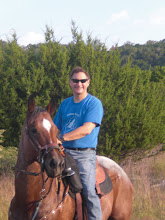
Before, I leave for today’s weekly gaming session;
It is obvious from reading other peoples’ blogs
that finding an old school game is not easy.
I know, I game with dedicated 3-tards.
Many retroclones will have a hard time drawing in youth or newbies because they require patience, determination, literacy and/or are counter-intuitive;
descending armor class (WTF?)
Roll high to save and hit,
But roll low for thief skills, find secret doors, etc..
Teaching your own children to game, doesn’t count –
they will most likely abandon’s dad’s (and/or mom’s) hobby
when they discover cars or
their own sexuality.
I believe retro cones will have a hard time converting 3-tards and 4-ons.
IMHO the future of our dwindling hobby belongs to game systems with the CLASSIC feel
AND 3.x or Pathfinder compatibility.
Primarily, because those systems have SO MANY modules, splat books and GM materials available for FREE
(or darn near free on Amazon or Ebay)!
See http://donjon.bin.sh/d20/dungeon/
From Cyclopeatron , 26
April 2013
Relative
Popularities of OSR Games
If G+ community size is any
indicator...
634 - Swords & Wizardry
551 - Original D&D
549 - Dungeon Crawl Classics
512 - Advanced D&D
329 - Lamentations of the Flame Princes
236 - Adventurer Conqueror King
222 - Labyrinth Lord
209 - Castles and Crusades
208 - Basic Fantasy
143 - Talislanta
124 - Astonishing Swordsmen & Sorcerers of Hyperborea
119 - Adventures Dark and Deep
115 - Holmes Basic
110 - Basic / Expert D&D
97 - AD&D 2e
70 - Delving Deeper
634 - Swords & Wizardry
551 - Original D&D
549 - Dungeon Crawl Classics
512 - Advanced D&D
329 - Lamentations of the Flame Princes
236 - Adventurer Conqueror King
222 - Labyrinth Lord
209 - Castles and Crusades
208 - Basic Fantasy
143 - Talislanta
124 - Astonishing Swordsmen & Sorcerers of Hyperborea
119 - Adventures Dark and Deep
115 - Holmes Basic
110 - Basic / Expert D&D
97 - AD&D 2e
70 - Delving Deeper
For Reference
2142 - Pathfinder ( which is more than S&W, DCC, LotFP, ACK and LL combined)
1465 - OSR Group
1430 - Dungeon World
1195 - Savage Worlds
733 - D&D Next
653 - D&D (4e)
1465 - OSR Group
1430 - Dungeon World
1195 - Savage Worlds
733 - D&D Next
653 - D&D (4e)



































